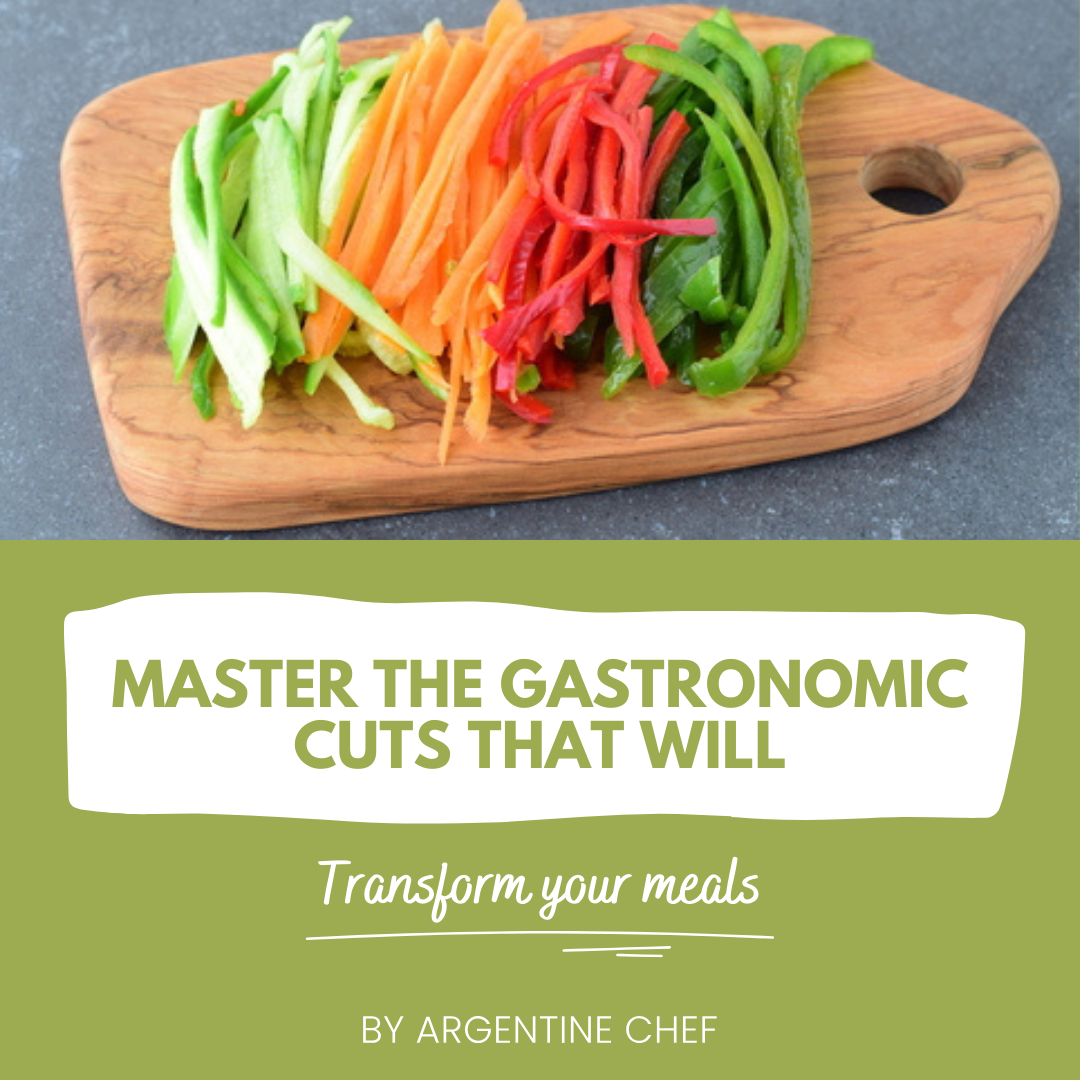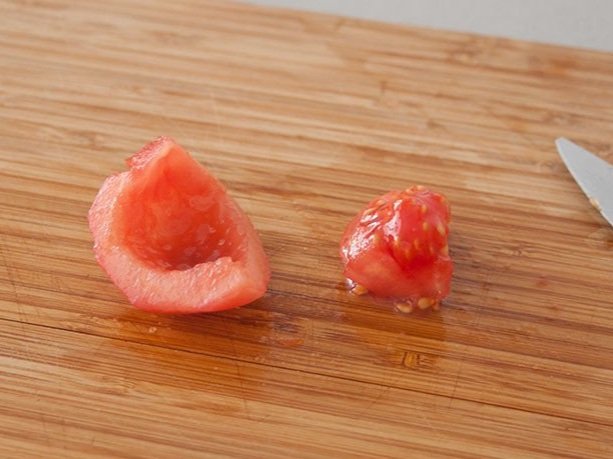Master the Gastronomic Cuts that will transform your meals
Hello everyone! Welcome once again to my Blog where you will find a lot of information and very interesting topics related to gastronomy. I am Chef Katriel and this time we are going to learn about different types of cuts for vegetables and fruits. Here I will explain the most important cuts and how to do them in a safe and professional way.
Each cut is a new way to better prepare your meals, turning your kitchen into a canvas of gastronomic art. Discover the secrets of precision and finesse with these essential cuts that elevate your dishes to a symphony of flavors and textures. Let’s start!
Different Types of Cuts:
🔪 Julienne or Bastón:
This is a rectangular cut, thinly sliced and a few inches long, making your dish look neat and professional. Mainly a star for garnishing stir fries and various vegetables, its simplicity is its charm.
🔪 Custom Brunoise:
Crafting small, typically ¼ inch or smaller squares with precision, this cut adds an artistic touch to carrots, turnips, onions, peppers and garlic. Best tip: Establish a stable base with a flat cut for flawless dice.
🔪 Quarters, or Wedges:
Two cross-cuts create four elegant pieces or quarters, which look perfect for potatoes, hard-boiled eggs and tomatoes. A culinary embrace for simplicity and sophistication.
🔪 Concasse Elegance:
This cut will help you make vegetables look elegant and sophisticated, especially tomatoes, with this French-origin cut.
You should remove the skin, seeds and pulp, then chop into equal sized and shaped pieces that add a touch of refinement to your culinary creations.
🔪 Château or classic turning:
A classic French technique, the 'Château' turning cut imparts a regular, oval shape to firm-textured vegetables such as potatoes, carrots and zucchini. For this type of cut you will find it helpful to use a smaller knife to achieve the necessary twist, thus adding finesse to the art of turning.
🔪 Chiffonade Finesse:
Thin strips become a culinary masterpiece, ideal for large leafy greens such as spinach, lettuce and aromatic herbs such as sage or basil. Whether for raw vegetables for salads or cooked vegetables as well.
🔪 Mirepoix Magic:
Knowing how to make mirepoix is an essential kitchen fundamental to have under your belt! It is a consistent cut to create cubes from 1/4 in to 1/2 in - slight irregularity does not matter. Perfect for salads, purees, sauces, stocks and soups, it is the harmony of flavors in every bite.
🔪Paysanne Perfection:
Derived from the French term 'Paysanne', this cut transforms vegetables into rustic dice. Ideal for boiled delicacies such as potatoes or carrots, adding a touch of country charm.
Sculpt with precision:
To turn these cuts into culinary masterpieces, use sharp knives and employ the right techniques. From establishing stable bases for dicing to using premium cutting boards, make sure each cut is a work of art.
It is essential to be alert to the possibility of cross-contamination between meat and fresh produce when handling food. This precaution is essential to maintain food safety standards and prevent the transmission of harmful bacteria or pathogens.
To optimize food safety in your kitchen, consider designating specific cutting boards for meats and others for fruits and vegetables. This minimizes the risk of cross-contamination during food preparation.
Now it's your turn to cook and apply these cuts to perfection! I invite you to watch my recipes on youtube and follow me on instagram to find out new tips and cooking classes that will help you to be a perfect cook!
Thanks for joining me, I hope you find it helpful.









